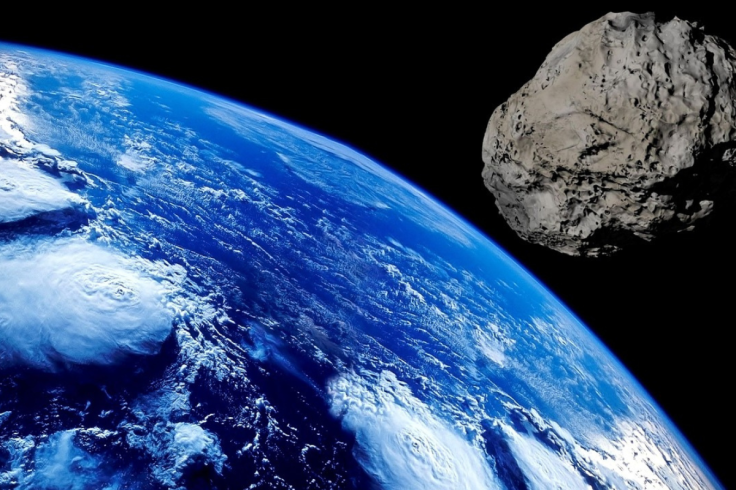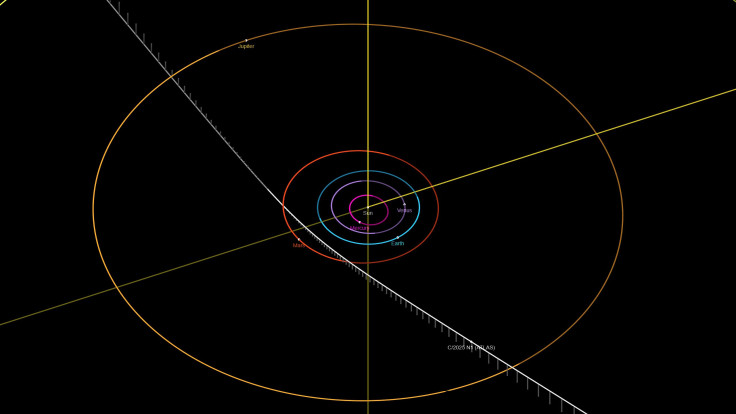3I/ATLAS Changes Colour Again—NASA Baffled by Strange Shift
Interstellar comet 3I/ATLAS baffles NASA as it mysteriously changes colour to blue and accelerates on its own.

Our solar system's collection of rogue visitors just got stranger. Astronomers monitoring 3I/ATLAS, our third confirmed guest from interstellar space, have been scratching their heads over a series of baffling new observations.
Not only has the object changed colour for the second time, but it has also started to accelerate in a way that gravity alone cannot explain. The strange colour shift, in particular, has reportedly left NASA and other space agencies baffled as they scramble for an explanation.

The Curious Case of Interstellar Comet 3I/ATLAS
For those just catching up, this mysterious object was first spotted on 1 July by the Asteroid Terrestrial-impact Last Alert System (ATLAS). Its incredible velocity and extreme eccentricity (between 6.1 and 6.2) quickly confirmed it was not from around here; it was on an escape trajectory, just passing through. It joins the exclusive club of interstellar visitors previously populated only by 1I/'Oumuamua and 2I/Borisov.
Astronomers have been watching 3I/ATLAS closely, identifying it as a comet due to its distinctive outgassing behaviour. But it's proving to be a very unusual comet.
Many of its features are peculiar, leading some to suggest it could be a 10-billion-year-old time capsule from an earlier age of the universe. Studying it is a golden opportunity to learn about the exotic environment it came from, though its exact origin remains a mystery.

3I/ATLAS and the Alien Hypothesis
Unfortunately, the comet's path took it behind the Sun from our perspective just as it approached perihelion (its closest point to our star). This observational blackout has been eagerly highlighted by Harvard astronomer Avi Loeb. He has suggested that an alien spacecraft trying to survey our Solar System might intentionally use the Sun to disguise a manoeuvre, perhaps to redirect itself towards Earth.
It is a hypothesis that nearly all astronomers reject. The object's clear cometary behaviour is a strong indicator of its natural origin, a position held by researchers at the Search for Extraterrestrial Intelligence (SETI) and NASA.
Nevertheless, the comet's re-emergence from behind the Sun was a key moment to test this highly unlikely hypothesis. After all, aliens have been suggested as an explanation for cosmic mysteries many times, and so far, the grand total of confirmed examples is zero.

A New Coat of Paint: 3I/ATLAS Changes Colour (Again)
So, what have we learned? In a new study, which has not yet been peer-reviewed, astronomers report that 3I/ATLAS appears to have changed colour again. Using a trio of spacecraft (STEREO, SOHO, and the GOES-19 weather satellite), the team monitored the object as it neared perihelion on 29 October.
The team found 3I/ATLAS has brightened significantly to around magnitude 9. This makes it brighter than many Herschel 400 galaxies and visible with a small telescope or a decent pair of binoculars.
More puzzling, they add that 'color photometry shows the comet to be distinctly bluer than the Sun.' There is not yet a satisfactory explanation for this rapid brightening, which far exceeds the rate seen in the more common Oort cloud comets.

3I/ATLAS Defies Gravity: The Non-Gravitational Push
Meanwhile, in a separate report, Davide Farnoccia, a navigation engineer at NASA's Jet Propulsion Laboratory, indicated that the comet exhibits signs of 'non-gravitational acceleration'—that is, acceleration not caused by gravity alone.
Before anyone screams 'dark forest attack', this does not mean the object moved by itself. In fact, this is likely further evidence of its cometary nature. As 3I/ATLAS approached the Sun, its acceleration changed as it began vigorously outgassing, losing mass in the process.
In a blog post, Loeb explained the data, noting 'the non-gravitational acceleration was measured at the perihelion distance of 1.36 times the Earth-Sun separation (defined as an astronomical unit or 'au'), equivalent to 203 million kilometers.'
He added that it showed a 'radial acceleration away from the Sun of 135 kilometers (=9x10^{-7}au) per day squared' and a 'transverse acceleration relative to the Sun's direction of 60 kilometers (=4x10^{-7}au) per day squared.'
Loeb calculates that this implies a massive loss of material.
'For a thermal ejection speed of a few hundred meters per second, the evaporation half-life of 3I/ATLAS is 6 months,' he writes. 'This implies that over the month it takes 3I/ATLAS to cross a spatial scale of order its perihelion separation from the Sun, 3I/ATLAS would lose about a tenth of its mass. Such a massive mass loss should be detectable in the form of a large plume of gas surrounding 3I/ATLAS during the upcoming months of November and December 2025.'
What's Next for 3I/ATLAS?
The pre-print paper from the solar observatory team agrees that significant outgassing is the likely culprit. 'Our cursory analysis of this data indicates the comet will likely emerge from conjunction considerably brighter than when it entered, with an extrapolated geocentric V magnitude of ∼9 at perihelion, perhaps driven by prominent, visible gas emission,' the team explains.
However, mysteries remain. 'The reason for 3I's rapid brightening, which far exceeds the brightening rate of most Oort cloud comets at similar r (C. E. Holt et al. 2024), remains unclear,' the team adds. 'It is possible that its H2O sublimation had been held down earlier by cooling from its CO2 sublimation, which remained unusually dominant at r ∼ 3 au, perhaps related to its rapid approach toward the Sun compared to other comets.'
For now, it is a waiting game. We must see what 3I/ATLAS looks like now that it is emerging from the Sun's glare.
'Without an established physical explanation, the outlook for 3I's postperihelion behavior remains uncertain... a plateau in brightness—or even a brief continuation of its preperihelion brightening—appears as plausible as rapid fading past perihelion,' the team concludes. 'Continued observations may help provide a more definitive explanation for the comet's behavior.'

With 3I/ATLAS now re-emerging from the Sun's glare, the global astronomy community is holding its breath. Is this just an unusual comet with a peculiar composition, or are its baffling blue colour and strange acceleration a sign of something else? The next few months of observation will be critical to solving the mystery.
© Copyright IBTimes 2025. All rights reserved.





















